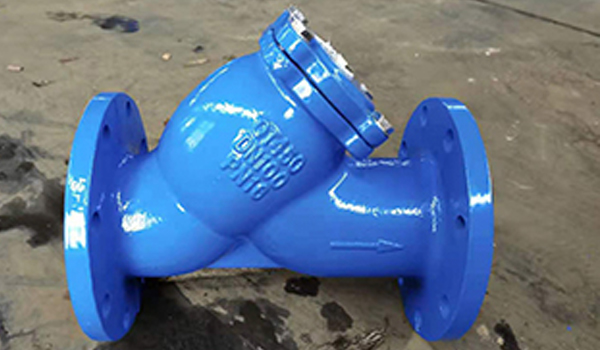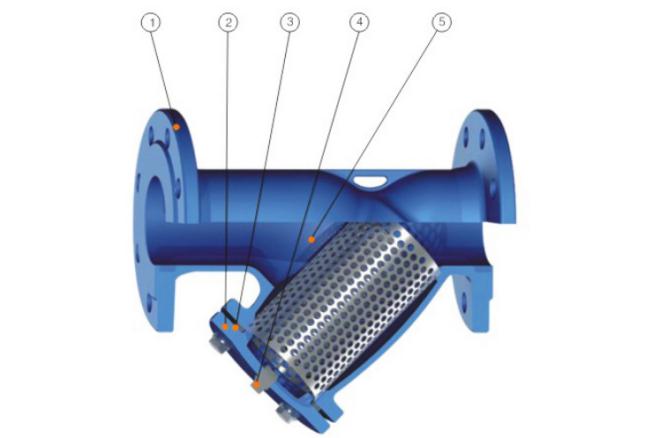- Gate valve
-
- DN1000 Extension stem double flange soft seal gate valveDIN F4 resilient seated gate valveDN450-1200 Resilient Seated Gate ValveDIN F5 resilient seated gate valveSocket connection soft seal gate valveUnderground cap soft seal gate valveBS5163 rising stem soft seal gate valveHard seal gate valveAPI slab Gate ValveStainless steel flange gate valveWafer knife gate valvePneumatic gate valveSoft seal gate valveExtension stem gate valveUL/FM fire protection groove ends gate valveRising stem forged steel gate valvecarbon steel gate valveStainless steel threaded gate valveDIN soft seal gate valveANSI soft sealing gate valve 200PSICast iron gate valveBS resilient seated gate valve
- Butterfly valve
-
- DN900 pneumatic triple eccentric hard seal butterfly valveD643H Triple Eccentric Butterfly ValveD343H Hard seal butterfly valveMulti standard EPDM seated butterfly valveSingle flange butterfly valveDN2000 Double eccentric butterfly valveFlange butterfly valveLug butterfly valveWafer butterfly valve with handleWorm gear operated butterfly valveWafer lined fluorine butterfly valveStainless steel wafer butterfly valveStainless steel flanged butterfly valveThree eccentric flange butterfly valvePneumatic flanged butterfly valvePneumatic wafer butterfly valveTriple eccentric butterfly valve wafer typeWafer butterfly valve ULC approvedInflatable seat butterfly valveHigh performance butterfly valveGrooved end butterfly valveElectric soft seal butterfly valveFlange fluorine lined butterfly valveHandle aluminum butterfly valveWorm Gear Aluminum Butterfly ValveFull PTFE lined butterfly valve wafer typeOne stem no-pin wafer butterfly valveMulti standard aluminum stem butterfly valveStainless Steel wafer Butterfly ValveAluminium handle operated lug butterfly valveLever Operated Flange Butterfly ValveButterfly valve stemButterfly valve discButterfly valve seat
- Ball valve
-
- DN1400 top-mounted eccentric semi-ball valveFlanged three-way ball valveFully welded ball valveNatural gas ball valveHigh platform flange ball valve1 PC ball valveFixed ball valvePTFE seat flanged ball valveMetal seat ball valveAPI 6D ball valve3 Piece ball valveFull Bore 3 way ball valve L-Port3 Way T-Port ball valve2PC Ball valve female thread stainless steel
- Globe Valve
-
- API Carbon Steel Globe ValveBellows Globe ValveStainless steel flange globe valveStainless steel thread S type globe valveStainless steel thread B type globe valveCast Steel Globe ValvePiston Globe ValveWCB Carbon Steel Globe Check Valveelectric motorized control stainless steel SS316 globe valveBrass Globe ValveCryogenic Globe valveHT200 Globe ValveThreaded Stainless Steel Globe ValveGG25 Globe ValveANSI API Cast Steel And Stainless Steel Globe valve
- Check valve
-
- Rubber seal check valveDN800 Slow closing check valveDN800 Rubber Disc Check ValveButterfly Buffering Check Valvecheck valve with counter weightSilent Check ValveWCB Swing check valveSwing Check ValveSingle Chip Check Valve H74WStainless Steel Wafer Check ValveSwing Start Check ValveFoot check valveAPI Swing Check ValveDIN Flange check valveSingle plate check valveLifting Check ValveBottom ValveHammer Diminish Noises Check ValveWafer Check ValveWafer dual plate check valve
- Control valve
-
- Static Balancing ValveCage Guided Sleeve Globe Control ValveDN1000 Piston Flow Regulating ValveDN1600 Electric Actuator Flow Regulating ValvePneumatic Flanged Butterfly ValvePneumatic Wafer Butterfly ValveAngle Seat ValvePneumatic gate valveElectric three-way control valveElectric sleeve control valve
- Water Meter
-
- Vertical Type Water MetersStainless steel threaded water meterPiston water meterPlastic water meterMore flow rotor dry water meterspiral vane flange water meterCI wotlman water meter with pulse outputLXCLG(R) Vertical removable element woltman cold (hot) water meterSingle flow rotor dry water meterPrepaid Token Water MeterElectromagnetic flowmeterRotary Piston Liquid Sealed Water MeterRotary Piston Liquid Sealed Water Meter
- Air valve
-
- Double ball exhaust valveDoubleair Air Valve SaudiDoubleair Air Valve Southeast AsiaDoubleair Air Valve South AmericaDouble Air ValveThreaded Air ValveSingle Air ValveTriple Functions Air ValveAutomatic Air Release ValveAutomatic release valveAutomatic exhaust valveComposite Exhaust Air ValveBrass exhaust valveDouble Ball Air Valve
- Pipe Repair & Coupling
-
- Flexible Multi-Function Pipe Coupling ZFJ-SSS Semi-Circle Pipe Repair Clamp SJW-HDuctile Iron Band Repair ClampStainless Steel Band Repair ClampDouble-Section Pipe Repair CouplingFolding Type Pipe RepairSingle-Section Multi-Function Pipe Coupling MF-SGear-Ring Type Multi-Function Pipe Coupling GR-SZBW Damping Corrugated Hose
- Dismantling Joint
-
- VSSJAFC(CC2F) Detachable Flange Transmission JointVSSJA-2(B2F) Double Flange Limited Expansion JointVSSJA-1(BF) Single Flange Limited Expansion JointVSSJA(AF) Flange Loose Expansion JointJGD-B Threaded Rubber JointZBW Damping Corrugated HoseKXT-S Flexible Dual-Spherical Rubber JointKXT Rubber Soft JointFlange Adaptor
Filter overview and selection principles
What is a filter?
Filters are small devices that remove small amounts of solid particles from liquids and protect compressors, pumps, meters and other equipment from working properly .
After the fluid enters the filter cartridge with a certain size filter screen, its impurities are blocked, and the clean filtrate is discharged from the filter outlet. When cleaning is required, as long as the detachable filter cylinder is removed and reloaded after treatment. Therefore, it is extremely convenient to use and maintain. Garbage and debris in the pipeline often cause damage to the equipment, such as scale, rust, compound sealants, welding slag and other solid particles, etc. may enter the pipeline system, in order to prevent the fluid containing dust and particles from adversely affecting the equipment , often using filters in pipelines. To protect the pump from construction debris left in the pipeline, a filter device can be installed upstream of the pump. Filters can filter out solid particles in liquids or gases, protecting equipment from damage and preventing pipeline blockages.
There is a filter screen on the flow surface of the filter. When the liquid passes through, most of the impurities will be blocked by the filter screen.
Scope of the filter
①The filters listed in the standard are suitable for liquid and gas materials in the production of chemical, petrochemical, light industry, etc., to filter their solid impurities, and are usually installed on the pipelines in front of the population of pumps, compressors or flow meters to protect such equipment or instruments.
②The standard includes two series of metric system and inch system: the metric series is divided into three pressure grades: PN10, PN25, and PN40; the inch series is divided into two pressure grades, Class150 (PN20) and Class300 (PN50). The pointed and flat-topped cone filters in the metric series are available in pressure ratings starting from PN6, i.e. PN6, PN10, PN25.
③The main structural materials of the standard filter are cast iron, carbon steel, low alloy steel and austenitic stainless steel. The working temperature range: cast iron is - 20 ~ 300 ° C, carbon steel - 20 ~ 400 ° C, low alloy steel Steel - 40~400°C, Stainless Steel - 196~400°C.
④ The standard filter uses a 30 mesh/in stainless steel wire mesh as the standard mesh, which can intercept solid particles with a particle size of not less than 614 μm.
Selection principle
The selection of filters can be selected according to the needs of the technological process and pipeline installation, combined with the comprehensive performance of various types of filters. The selection principles and points of attention are as follows.
①In order to ensure the tightness of the pipe network system, the filter with socket welding and butt welding connection can be selected ; if the convenience of replacement is considered, the filter with threaded connection or flange connection can be selected.
②The body material of the filter should be the same as or equivalent to the connected pipe material.
③ For the working medium with a large amount of solid impurities, a filter with a larger filter area is selected.
④ Generally, the filter whose effective filtering area is more than 3 times of the cross-sectional area of the connected pipeline can be used as a permanent filter; the effective filtering area of the temporary filter is more than twice the cross-sectional area of the pipeline. However, when the solid impurity content in the conveying fluid is not much or there are other measures to make up for it, the requirements can also be appropriately reduced.
⑤ The selection of the mesh number of the filter should be considered to meet the needs of the process, or to protect the mechanical energy of fluid conveying such as pumps and compressors.









